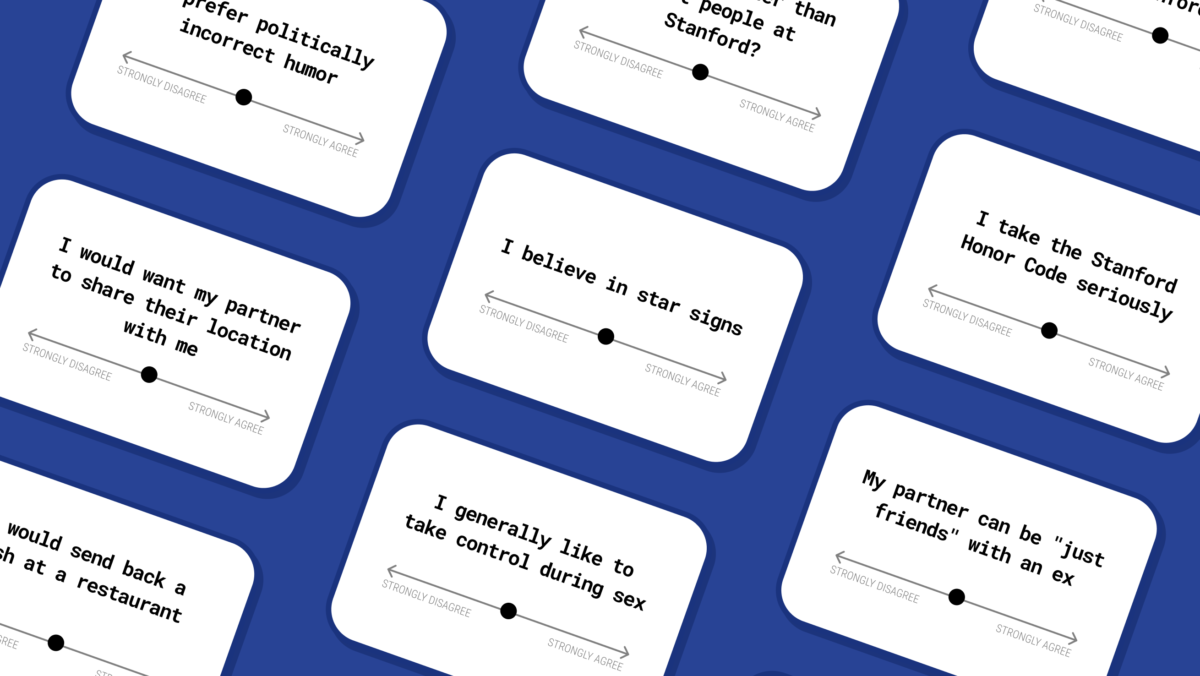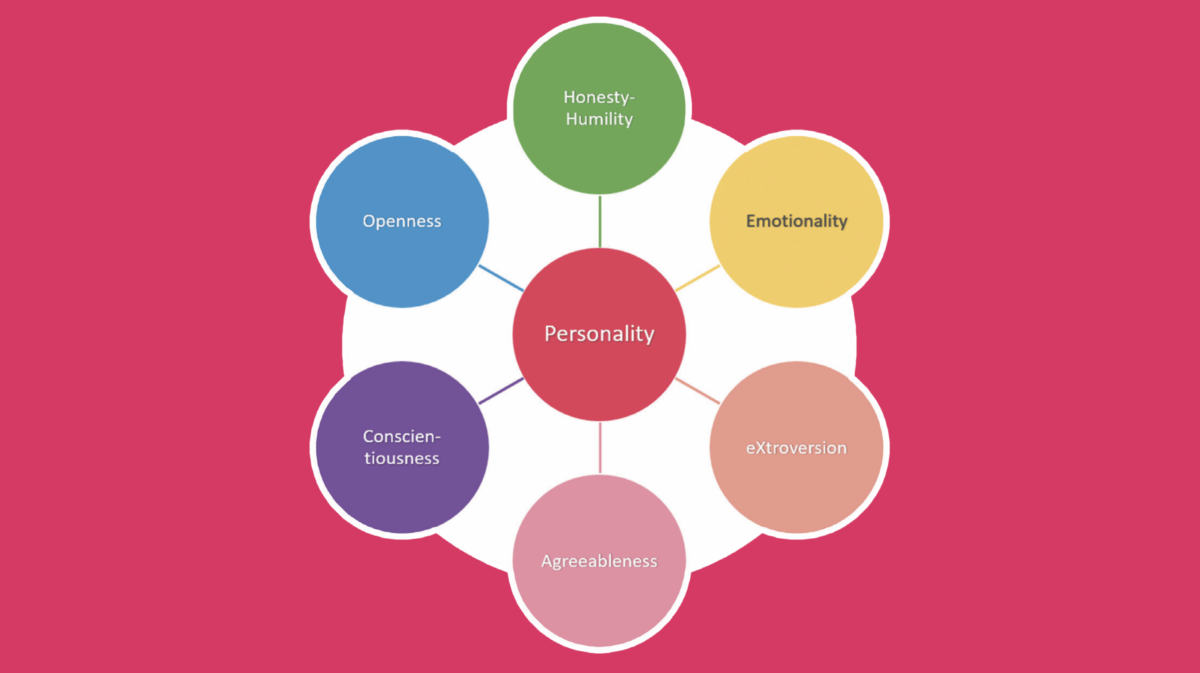In 2021, the Stanford Marriage Pact spread to more than 60 campuses nationwide. Since originating as a final project in an economics class in 2017, more than 200,000 college students have participated in the survey, expressing their values and beliefs with the hopes of being algorithmically matched with a compatible long-term romantic partner.
Its reach did not spare Katherine Luong, now a senior at Cornell University, majoring in human development with a concentration on relationship psychology. She took the Cornell Marriage Pact last year and joined the company’s mailing list. Then a message from the company popped up in her inbox. Inside were job openings for social psychologists.
“After a few interviews, I guess they liked what they saw, and I was hired,” Luong said. “This kind of fell on me out of the blue, and I’m really grateful for it.”
When she joined part-time, Luong was on the product team for the Marriage Pact with two other recruits. The role wasn’t a perfect match, so they created an offshoot that became the questionnaire team.
Together, the three recruits maintain the infrastructure of the questionnaire, integrate the questions with new products and consult with other members of the company to decide how their proprietary algorithm ranks the importance of different survey responses. In short: they’re in charge of the mechanism that might determine your future spouse.

The questionnaire team has developed a way to model a successful long-term relationship, which is based on four meta-levels: personality, basic values, romantic tendencies and building a shared life. It’s called the “bucket system,” according to Luong.
Of all the buckets, “Personality” is the most difficult metric to capture, so the team uses the HEXACO model to further deconstruct that component into more concrete attributes:
- Honesty-humility: a tendency to be fair and authentic toward others
- Emotionality: a measure of neuroticism or how predisposed an individual is to experience negative moods
- Extraversion: the degree to which an individual is energized by being around many people
- Agreeableness: how cooperative, patient or compassionate someone is
- Conscientiousness: a tendency to take responsibilities seriously and do what is believed to be morally right
- Openness to experience: an index of how imaginative an individual is, aesthetic appreciation, attunement to one’s feelings and psychological liberalism

This model relies on the conclusions of several lexical studies of European and Asian languages, with the hypothesis that of a person’s most important characteristics manifest in the way they use language, and that their most valued characteristics can be encoded in single words.
The lexical hypothesis has been challenged before, despite the growth of its influence in the field of psychology over the last century. Language enables socialization, the transmission of information and unity under common objectives, which often means that there’s a disproportionately high number of social words in a given vernacular. It follows that an inherent bias arises against the frequency of other types of verbal descriptors. Likewise, some behaviors or characteristics are regarded as too complex to be encoded into one word when there exists an array of connotations or definitions that can be interpreted from informal or ambiguous communication.
As for classifications of romantic tendencies, the team relies on attachment theory, which asserts that young children need to develop a strong relationship with at least one caregiver for optimal socioemotional development. How this process unfolds can have many consequences for behavior throughout different circumstances in life. Among them, individuals may develop “different beliefs about romantic love period, availability, trust capability of love partners and love readiness,” according to a 2015 study from Islamic Azad University.
Joy Zheng, another one of the three questionnaire researchers, is a senior at Northwestern University studying psychology and cognitive science, with a concentration in linguistics. When the Marriage Pact came to Evanston in autumn 2020, she was living off campus but learned about the survey from her friends.
She filled it out, but despite receiving a 99.96% match with someone, she did not reach out. “My parents found his Instagram, and they were just like, ‘We don’t think he’s a good match for you.’”
She did not stop there, however. In the spring, Marriage Pact released a report to Northwestern students that detailed various statistics on the survey data that had been collected, breaking down some of their findings by major and response. Zheng said she found the data “fascinating” — enough to submit an application when the report mentioned that the company was hiring.
“Going into the interview, I had no idea that it was a company outside of Northwestern, which I think was part of their plan to make it seem like it’s something brought to campus by students,” she said. “It did feel like that.” Zheng has been with the Marriage Pact since June 2021.
Luong said that the questionnaire team tries to keep the core survey at 40 to 50 questions every year. To arrive at this curated list, hundreds of questions are considered, and even some of the final ones are left out by some campuses with which they partner. Last semester, one university decided not to include a “deal-breaker question,” although she said she could not remember what it was.
Deal-breakers that the Marriage Pact team has considered in the past include, “Abortion should always be legal,” and, “I would end a friendship with differing political views.” Pew Research Center kept track of a number of “deal-breaker questions” in a 2020 survey, listing, for example, whether a potential match voted for Donald Trump. Single Americans today are more reluctant to date someone who lives far away, has accumulated significant debt or may hold differing political affiliations, according to the report.
Stanford sociology professor Michael Rosenfeld was among the experts who advised on the process of writing the questionnaire for Pew’s data collection from U.S. adults. For what it’s worth, his children, who are in high school and college, were stuck at home during the pandemic.
“I understand why young people are stressed,” he said. “The mating-dating picture is always, for the undergraduates, going to be full of uncertainties and experimentation and a little bit of stress and anxiety, because people haven’t figured it out, and they’re not actually trying to figure it out right now.”
Then, Rosenfeld added, these emotions among youth are amplified under the variety of disruptions that the last two years have seen, “which single people in general have experienced, but maybe it’s worse if you’re an 18-year-old, who thought they were going to be independent and ended up back living with your parents.”
In 2022, which has already been deemed the “Year of Practical Thinking,” an air of impermanence colors the social conscience, with millennials setting the trend of being “incapable of intimacy and commitment.” Among the factors that can contribute to the formation and shifts of their approaches to interpersonal relationships are worsening crises around the world, as well as pushing youth to prioritize their health, explore their sexuality and achieve financial stability.
Linguistic relativity may also play a role in the way individuals’ express their values or have subjective experiences, according to Zheng.
“Depending on the language that you speak, your cognitive interpretations of stuff in the physical world is going to be different,” she said, referring to a 2007 research article in the Proceedings of the National Academy of Sciences that studied how the color spectrum is divided up differently in English and Russian terminology. For example, English-speaking cultures do not place as much emphasis on different shades of blue, whereas in Russian, light blue and dark blue — “goluboy” and “siniy,” respectively — are considered distinct.
Visible light is a continuum of electromagnetic radiation with wavelengths ranging from 380 to 750 nanometers, and it is divided into main chunks at different, equally arbitrary points in that language, which can cause its speakers to overestimate the difference between two shades of blue. Similarly, categorical thinking can pervade various aspects of life, such as politics, identity and relationships. Indeed, pattern recognition is the hallmark of the evolution of the human brain.
With this ability comes a fixation on neat boundaries and a tendency to lose the bigger picture. So what information about a person is lost when you break down the intangible aspects of their personality into distinct and discrete units?
This past Valentine’s Day, the Marriage Pact sent out a newsletter message to its subscribers and said that, according to survey data from Villanova University, “50% of nonbinary students identified as socialist in 2020, compared with less than 5% of men and women.” Furthermore, students at Columbia University are more likely to be accepting of their partners smoking cigarettes and doing hard drugs than students at Cornell.
The most recent Campus Report, released in March, found that 16.2% of Stanford students are in a partnered relationship.
Ömercan Erol, who studied psychology and economics at Tufts University, joined the questionnaire team with Luong and Zheng shortly after graduating last year. He, too, had received an email from the Marriage Pact with a statistical report.
“They were looking for romantics, social psychologists, behavioral economists … that sounds like me,” he said.
Erol is quoted later on in the newsletter, introducing the work of economics professor Alvin Roth M.A. ’73 Ph.D. ’74, who once described dating as a “two-sided matching market where two agents actively evaluate each other in the context of other people and match only if both agents mutually agree on it.”
“As intriguing as this may sound to those who enjoy geeking out on social sciences, adoption of such a commodified understanding of dating by human agents themselves has the potential to be toxic,” Erol wrote, adding that it compels those who seek love to entangle the concept of market value with their self-worth.
Roth has applied his research in several ways, including in a redesign of the deferred-acceptance algorithm in the 1990s for matching medical residents, which the National Resident Matching Program still uses today. The Marriage Pact’s matching algorithm last shared similarities with the deferred-acceptance algorithm in 2017 and has since become proprietary.
“We swipe through endless options and shop for love. When we buy into such a material notion, we start looking for ways to increase our value for matches that are considered higher in value in comparison to other agents,” Erol wrote.
There are three considerations when ranking the priority of a question, Erol said in an interview with The Daily. The first is whether it can be strategized; the second is how firmly the question is grounded in scientific research; and the third score is how “spicy” it is — such as these examples in Marriage Pact’s blog:
- “I would get cybernetic implants.”
- “I generally like to take control during sex.”
- “It is more important to protect someone’s feelings than to tell them the truth.”
- “My partner can be ‘just friends’ with an ex.”
- “Would you rather be left at the altar or leave someone at the altar?”
- “I would send older relatives to a nursing home.”
When interacting with someone in person, the only available information is what that person communicates, and values are significantly easier to detect than personality traits, according to Erol.
“You have no idea how much thought and effort is going into one question,” he added.
Erol, Luong and Zheng all live in different physical locations, but Erol described Marriage Pact’s workplace culture as something he wants to remain intact as the company expands. Erol described an intellectually stimulating culture in which everyone is “working toward such a fun goal.”
The team currently has a collection of roughly 500 questions, with an ongoing goal to write 10 new ones a day. Erol said that he often thinks of questions while chatting with friends. Together, Erol, Luong and Zheng share the questions in an “ideas feed” and upvote or downvote them.
One question that is not currently part of the survey but Erol wants to incorporate eventually is whether someone would rather never apologize than over-apologize.
“We try to see where people stand on that spectrum,” Erol said. “Because if you make one of these traits look bad, then people will strategize and won’t be honest.” He then added that responses should be “more of a value statement and less of a behavioral assessment of that person.” Additionally, the team is in the process of producing “Marriage Pact–branded research” that will focus on psychology or sociology, according to Erol, among other endeavors.
The new Dialog feature — which will send personalized questions to Marriage Pact users every day — is “coming soon.” Luong has been testing it, and, based on her answers, she can see who is more likely to hold similar beliefs and the groups to which such individuals most commonly belong.
In January, she received the question, “I like to play games that involve disclosing intimate thoughts and feelings” and marked a six out of 10 for how much she agreed with this statement.
“It told me that Republicans are least likely to agree with me and that I aligned more with Christians than agnostics,” she said. “I am agnostic, so it’s really cool to see this kind of side-by-side comparison.”
Checkmate, another upcoming feature after Soulmate Radar, allows users to “scan” their friends, view long-term compatibility scores and “discuss the ensuing tea,” according to Marriage Pact’s website.
When writing questions, Luong said that she thinks about what the distribution of responses will be. It’s better when there are large divides in what people’s responses are, for as much as those distinctions can help match two people who may get along well, they can avoid matching two people who will not, according to Luong.
In other words, “If we ask very lukewarm questions all the time, it wouldn’t be as good of a matching experience,” she said.
